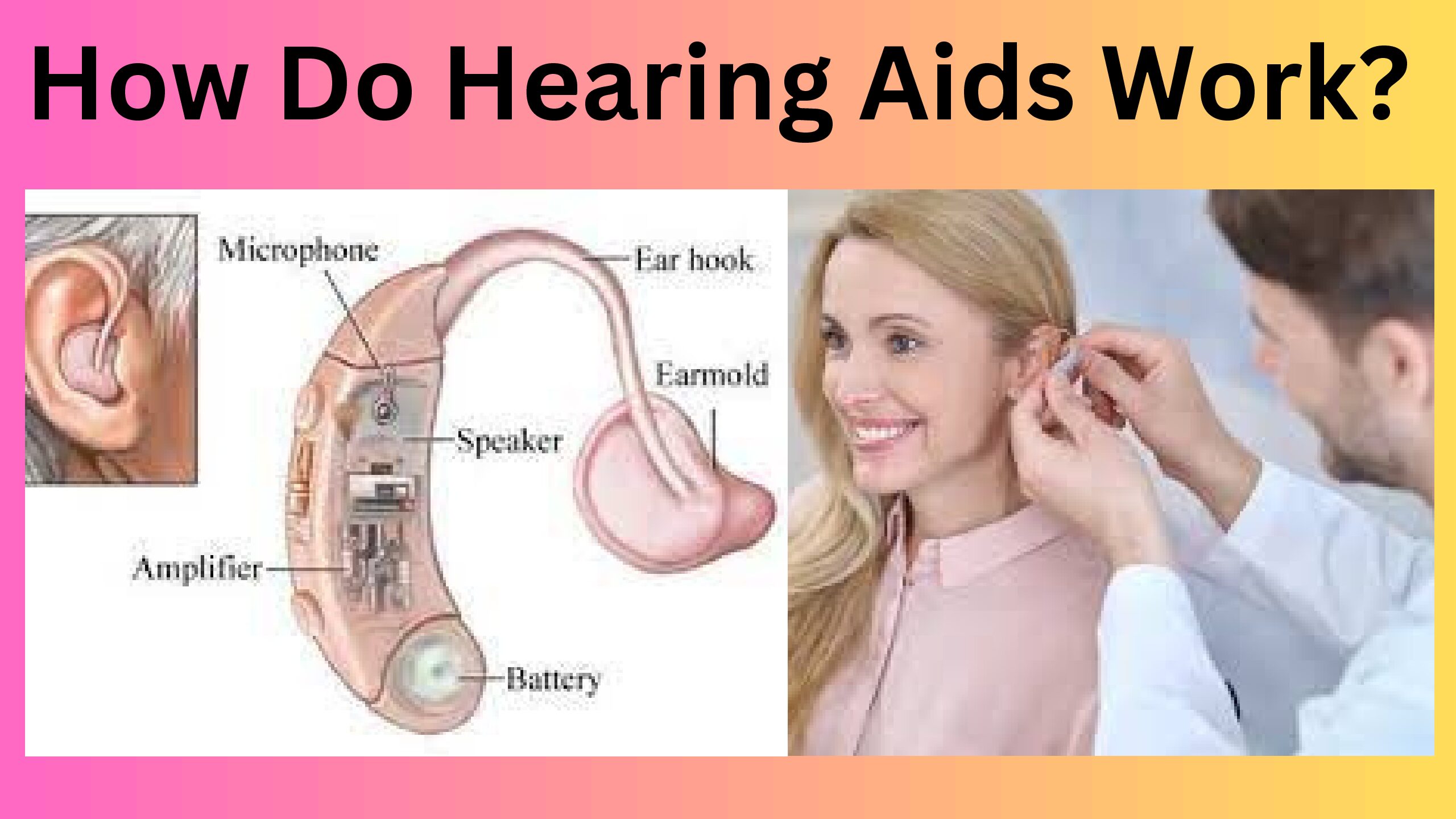Hearing aids have advanced from the days of bulky transistors that could make everything sound louder. These modern-day hearing aids improve your hearing instead of just boosting the volume.
It is easier to hear speech while background noise is filtered depending on your personal preferences. The result is transformative for millions.
However, according to UK organizations, including those of the The RNID (Royal National Institute of Deafness) along with the Hearing Link many more people could benefit from hearing aids. Although 59 percent of UK people wear glasses, about 3% actually wear hearing aids. Based on the RNID, one in five UK adults (12 million) currently suffer from hearing loss, and the number is growing. This is a large number of people whose lives, work lifestyles, overall health and overall happiness can be improved by using these ever-more sophisticated hearing aids.
We’ll discuss the ways in which the newest hearing aids, which are tiny and digital, assist in enhancing the communication and sensory experience of their users, regardless of regardless of whether they suffer from mild or severe hearing loss, or Tinnitus.
Get a no-cost hearing aid estimate today!
If you’d like information on what hearing aids would cost you, just fill out the short survey below and we’ll send you an estimate that is based on your needs exactly.
What is the function of hearing aids? Everything you have to be aware of
How can hearing aids improve audio?
Since the 18th century, when gents first came on the potential of ear-trumpets Hearing aids have developed in accordance with technological advancements in audio. The moment the phone was first invented and the first hearing aids that were electronic came soon thereafter. When the transistor was invented during the 50s set the way for tiny hearing aids that could be worn (and their notorious feedback whistle).
The next breakthrough in audio was of course digital. It has allowed scientists to develop hearing aids which are in essence small computers. There are several kinds, but they can be distinguished primarily by their size and shape. Modern hearing aids have the same five essential elements:
- Microphone
- Processor
- Amplifier
- Speaker
- Battery
This processor makes the modern digital hearing aids more than an amplifier. It chooses the sounds in a way that is intelligent depending on the kind of hearing loss you have Then it analyzes and makes adjustments before transmitting them directly to an amplifier.
The amplifier sends the adjusted sounds to your inner ear through the speaker along with tubing or a thin wire. In the ear’s ear canal the sounds are converted into electrical impulses that are processed by your brain, and they are processed, and then translated. This happens so fast as to appear as if it happened in a flash.
How can hearing aids be used to treat Tinnitus?
There is a risk that any sound amplification can cause more tinnitus However, this is not typically the scenario. This is because clarified and amplified external sounds could help you to get away from the inner noises of the tinnitus. As per Tinnitus UK Hearing aids can replace perceivable sound (tinnitus) by “heard sound”, which can be customised and adjusted to meet your needs.
What are the different kinds of hearing aids work?
The best type of hearing aid that is right for you will be determined by many factors, including the type of hearing loss you suffer from and your sensitivity (very small hearing aids may be quite difficult to operate) and the dimensions of the ear canal. They all operate using the same procedure however the location of your hearing aids on or inside your ear could affect the effectiveness and ease of use. Here’s a quick overview.
1. The ear (ITE) hearing aids
These tiny, discrete hearing aids are closed designs, meaning that they transmit the sound directly to you. Their small size and ear-to-ear position make it simple to use headphones and your phone while wearing them. However, they’re less effective than larger models, which is why they’re not the most suitable choice for people with severe hearing loss. If your ear canals are small and narrow ITE hearing aids might not be able to fit in their.
There are also inside-the-canal (ITC hearing aids ), that are essentially ITE, however they are molded to precisely fit into your ear canal. They’re a little larger in comparison to ITE hearing aids which means they might be a bit more manageable in the event that your fingers aren’t quite as agile as they were previously.
Hearing aids that are ITE like those from the Signia Silk 5Nx Digital Hearing Aid (currently PS898/pair from Hearing Direct), aren’t required to be fitted by an auditorologist.
2. Hearing aids behind-the-ear (BTE) hearing aids
They are bigger, but more robust in comparison to ITE hearing aids which is why they’re ideal for people who have greater hearing loss. They are placed behind your ears and transmit audio through a receiver that is either inside the ears or in the canal in the ear, as well as wire or tube inside the canal. They usually include additional functions, such as Bluetooth connectivity as well as rechargeable batteries.
Hearing aids like those from the Styletto 1X rechargeable (currently priced at PS899/pair from Hearing Direct) are recommended to be fitted by an audiologist who can help you choose the right size and model for you.
What other features can hearing aids come with?
Additional features can make a huge an impact on the quality of the sound your hearing aids record, and their convenience. If you’re looking to have the most natural sound experience, check out for features like the ability to manage noise, a wider bandwidth and automatic volume control and a variety of conversation settings. Anti-shock and tinnitus masking which instantly block out the sudden sound are available with a variety of more powerful BTE (behind-the-ear) hearing aids.
There are many options that increase the ease of using hearing aids as well. The capability to connect the hearing aids you have to your mobile phone through Bluetooth is now a feature of the majority of mid- to high-end hearing aids, along with the capability streaming music, and controlling your television or smart speaker using voice control. The majority of hearing aids come with an app that is compatible with them and a few have the option of a remote for handheld use.
The binaural feature of phone calls is an excellent option for people who use phones as it streams automatically audio from your mobile to your hearing aids. The tracking of health data and waterproofing are also features to look for.
Rechargeable batteries aren’t standard in the majority of hearing aids. If you’re looking for rechargeable batteries choose features-rich BTE hearing aids, such as those from the Unitron Moxi Blue 3 (currently PS1,750/pair from Hearing Direct).
Do hearing aids work for deaf people?
Hearing aids are only helpful only if you have hearing left. If you’re profoundly deaf, which means you have suffered from hearing loss greater than 90 decibels (decibel hearing loss) Hearing aids won’t be able to let you hear better, and when you’re totally deaf they will not restore your capacity to hear. The process of losing hearing tends to be gradual, so the sooner you begin wearing hearing aids the more benefit you’ll reap from it.
ITE or ITC hearing aids will be the most effective when you are suffering from moderate to light hearing loss that is more than 25 dBHL. It’s currently one-in-five UK adults, as per the RNID. They estimate that another 1.2 million UK people suffer from hearing loss of more than 65 dBHL. This is regarded as severe (“speech must be more loud than normal, group discussions can be challenging”). BTE hearing aids can assist those with moderate or severe hearing loss.
It’s important to understand it is “not like putting on a pair of glasses” (my dad, 82years old, was quite clear about this). They can’t miraculously bring back your hearing when you were a teenager. In fact, the NHS says hearing aids will not make your hearing perfect.” What they can do is help to make sound more clear, and decrease the effect hearing loss can have on your daily life.
How do hearing tests work?
Hearing tests test your capacity to detect sounds of various volume and pitches. The results are logged on a graph referred to as an audiogram. It can be used to determine the extent of your hearing loss as well as the kind of hearing aid that will aid you.
Conclusion
Hearing tests for free are available through the NHS through your GP However, it might take a while to be recommended to an expert. If you’d like to get immediate quotes for a hearing test with a specialist go to our sister website HearClear and take their easy questionnaire.















